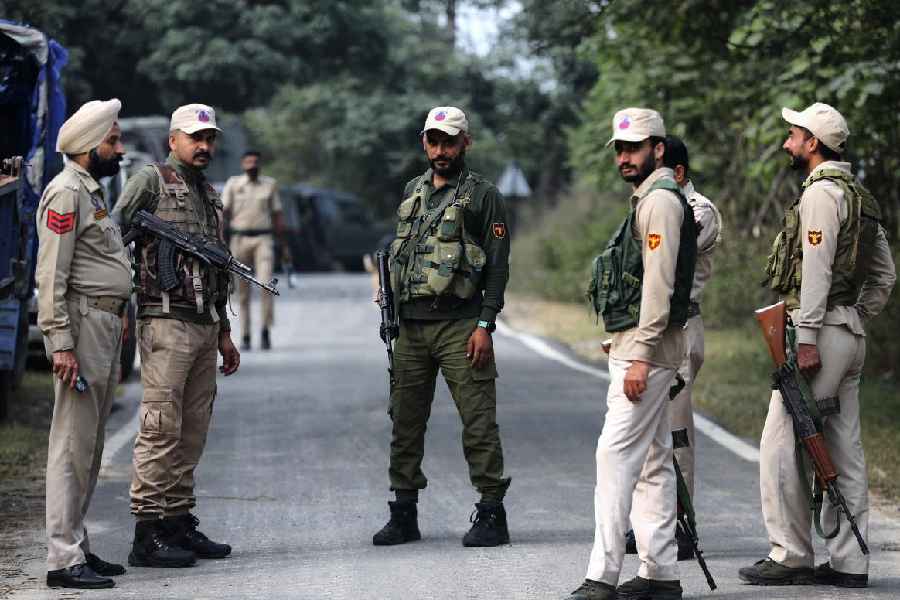Three terrorists killed in an encounter with security forces in the Akhnoor sector of the Jammu region were members of the banned Jaish-e-Mohammed (JeM) group and had recently infiltrated into the area from Pakistan-occupied Kashmir (PoK), officials said on Wednesday.
They said the terrorists were planning a major strike, utilising the Akhnoor route traditionally used by operatives of the banned Lashkar-e-Taiba (LeT) terror group.
According to intelligence reports, the terrorists entered the Akhnoor region through the Battal area, and a wireless set seized from them confirmed their association with the JeM.
Unlike the typical strategies of infiltrating terrorists, who often adopt "conservation and consolidation" tactics, these ultras were reportedly aiming for a substantial attack, the officials said.
Notwithstanding the assertions made by Major General Sameer Srivastava, General Officer Commanding of the Army's 10 Infantry division, that the area had not seen infiltration for an extended period, the officials noted that there were prior reports of terrorist movements in December and April of the previous year.
Maj. Gen. Srivastava had indicated that terrorists in the region were operating in small groups and had moved to Akhnoor for a planned offensive.
The encounter broke out on Monday morning when three local teenage boys visiting the Shiv Mandir Assan in Battal encountered the armed terrorists dressed in combat gear.
On being asked by the boys if they were military personnel, the terrorists reacted aggressively, threatening the boys with serious consequences if they talked about their presence to anyone. The terrorists followed the boys until they reached a main road.
As they saw two Army vehicles -- a Maruti Gypsy and an ambulance -- on the road, the terrorists opened fire targeting the Army convoy and retreated towards the temple.
In response, special forces and National Security Guard (NSG) commandos swiftly launched an operation, resulting in the elimination of all three terrorists.
In an unprecedented move, the Army deployed four BMP-II infantry combat vehicles to enhance surveillance and fortify the cordon around the attack site near the Assan temple in Jogwan village, situated along the Line of Control (LoC) in the Khour area.
The BMP-II, a Soviet-era infantry combat vehicle, is equipped with a 30-mm fully-stabilised automatic cannon, a 7.62-mm machine gun and a range of advanced features, including night vision and smoke-grenade launchers.
Helicopters were also deployed to assist in locating the hiding terrorists in the dense forests of the region.
Except for the headline, this story has not been edited by The Telegraph Online staff and has been published from a syndicated feed.











